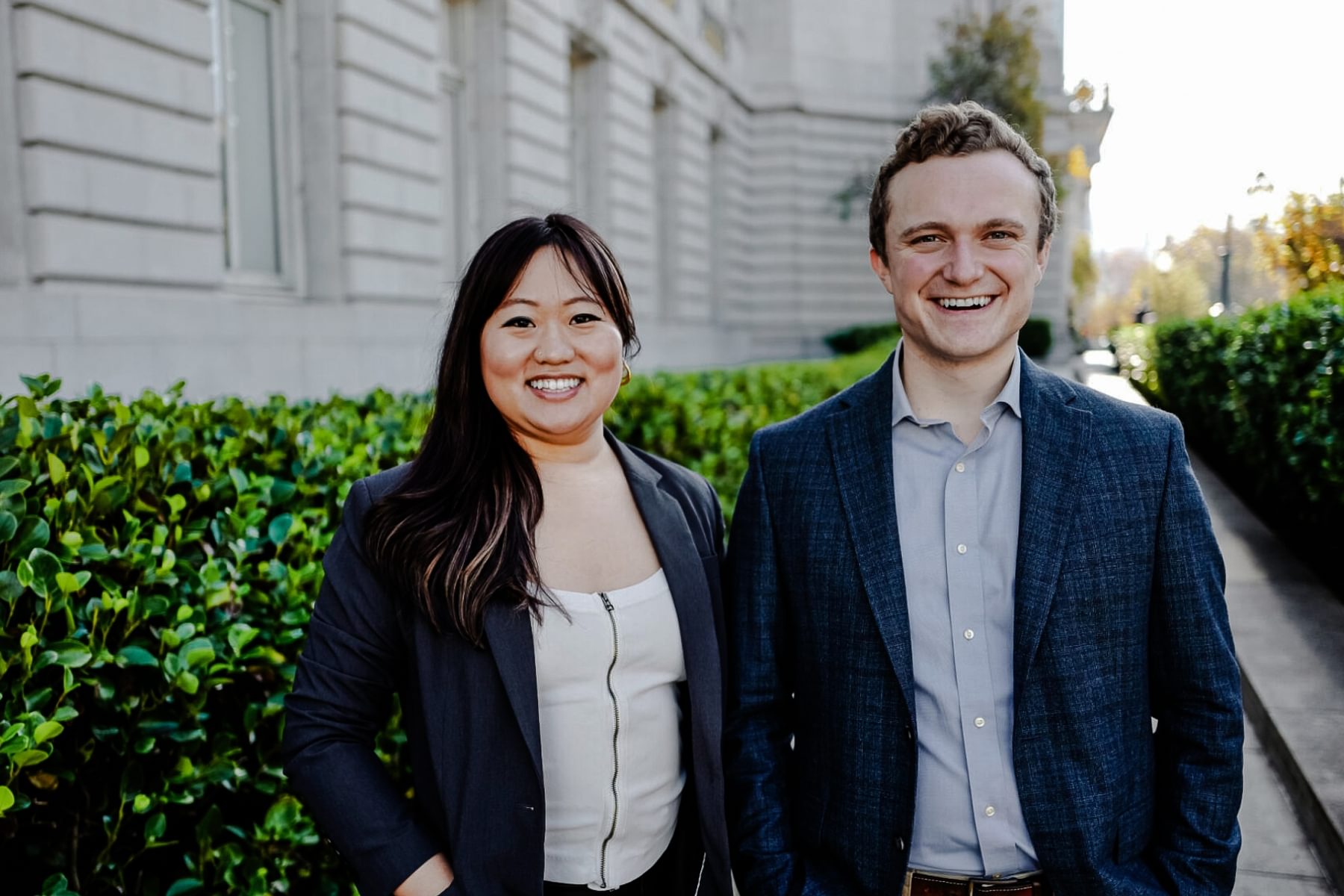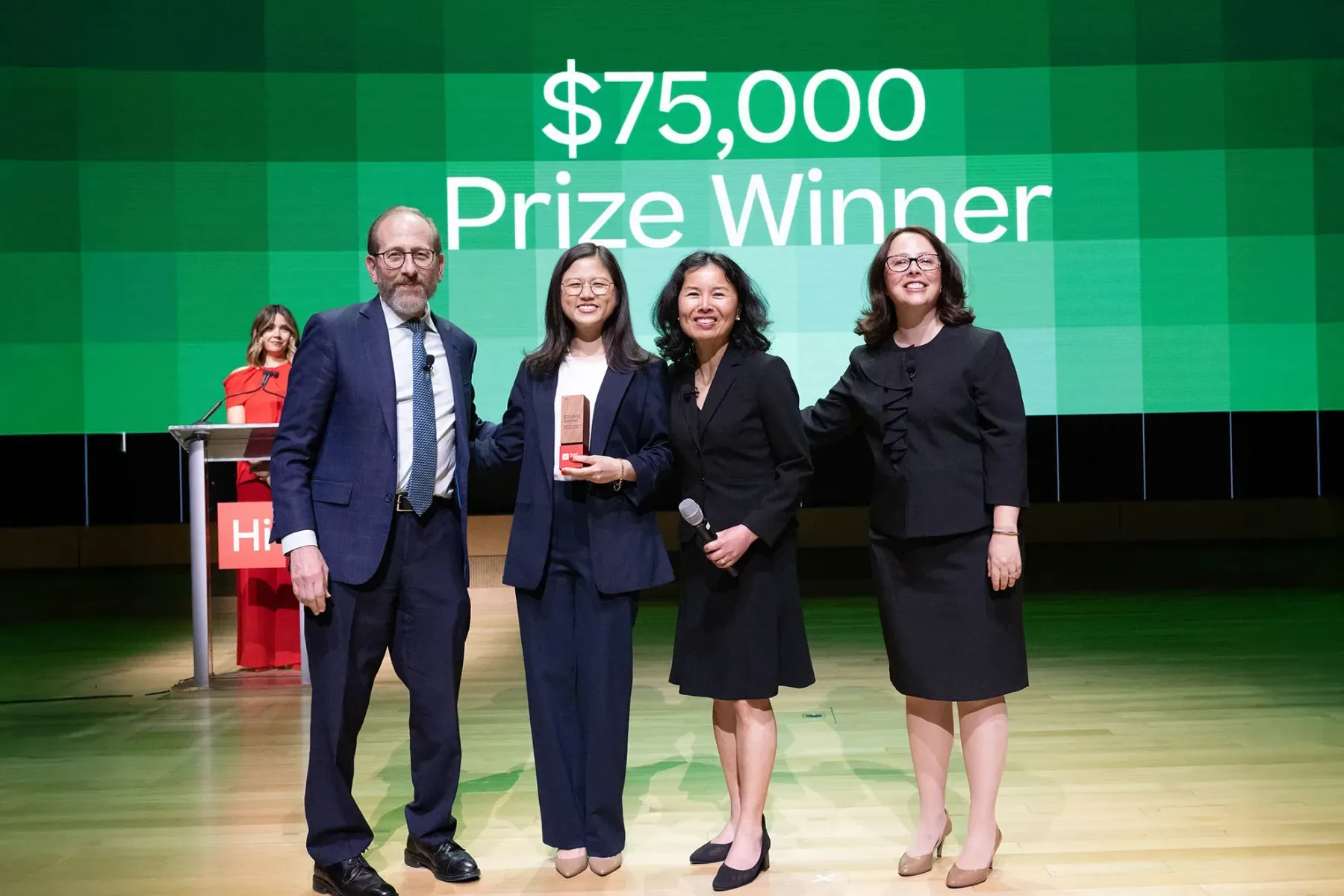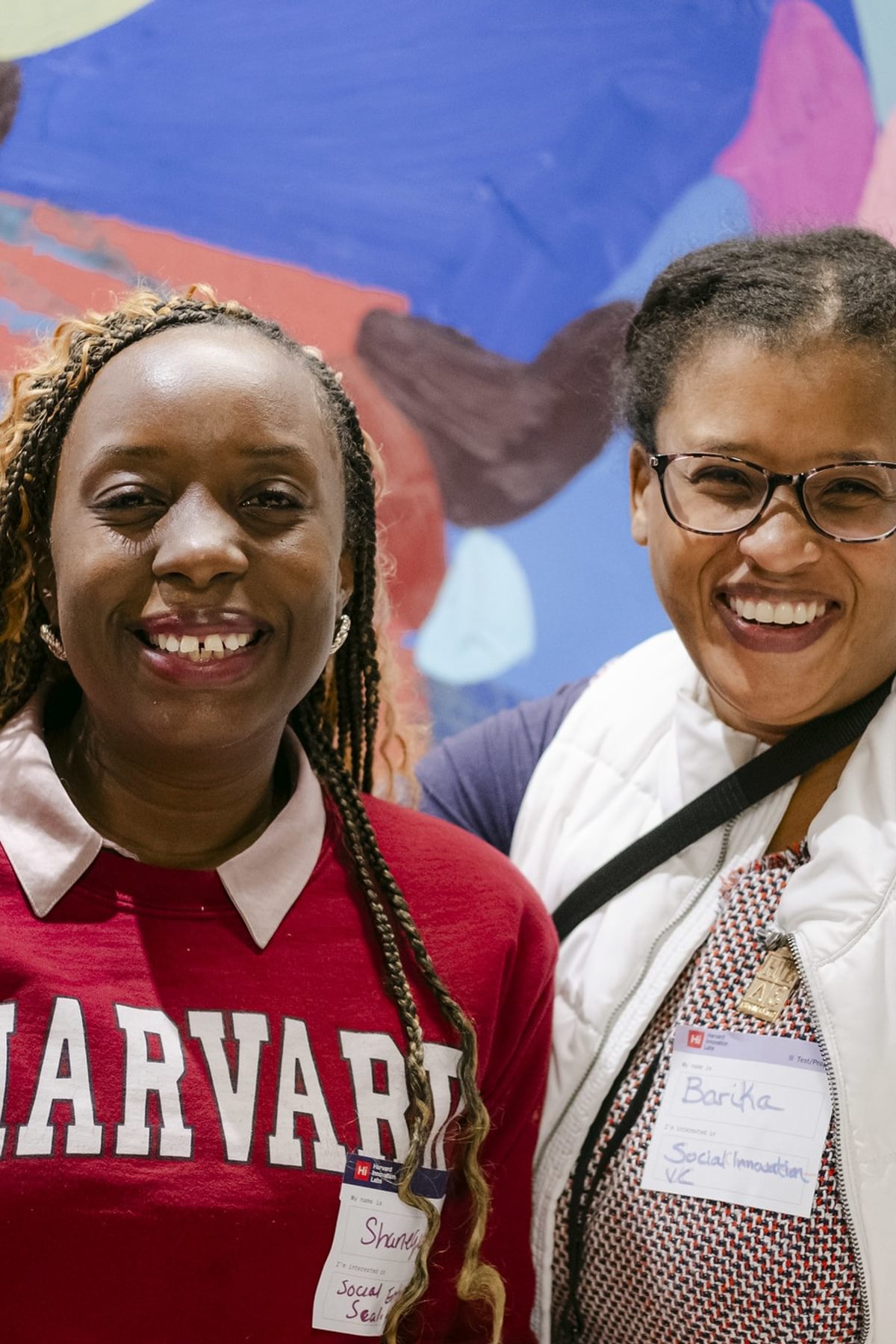This Asian, Asian American, and Pacific Islander Heritage Month, we’re glad to celebrate the many AAAPI founders in our venture community and in the world! It’s no exaggeration to say that we’re indebted to AAAPI leaders and innovators for their contributions to every facet of our society, from building the Transcontinental Railroad to advancing civil rights to conducting groundbreaking research and much, much more. We are also thinking deeply about the barriers that AAAPIs still face in attaining leadership positions and full economic opportunity in the US.
In thinking about the AAAPI community, we recognize the diversity within it. By aggregating data about a term that encompasses 50 races and identities and assuming homogeneity under the AAAPI umbrella, people making economic decisions can end up solidifying inequities rather than helping to remove them. To help AAAPI leaders rise up, it’s important to recognize the vast range of identities and experiences within that group label. It’s also important that we gather information and encourage research on the racism, gaps in opportunity, and health and economic disparities that AAAPIs face.
To explore resources for and voices of the AAAPI community at Harvard, this Harvard Business School MBA Voices blog post shares the stories of community members in the Asian Affinity Business Association. Alumni around the globe may wish to join HAAAA, the Harvard University Asian American Alumni Alliance, which “seeks to provide a forum for connection, community, learning and support among Harvard University Asian American alumni globally, to foster engagement with Harvard and to represent our concerns at Harvard and in the community beyond.”
As part of our AAAPI Heritage Month efforts here at the Harvard Innovation Labs, we reached out to four AAAPI i-lab venture leaders to get their perspective on venture building and AAAPI leadership. Read on to learn how Hamida Babool, Andrew Huang, Tesia Kim, and Raymond Qin are making a difference!
Hamida Babool of Madad
Harvard Innovation Labs: Please describe your venture. What inspired you to start it?
Hamida Babool: Among the worst-hit victims of global climate change are the communities in South and Central Asia’s high mountain regions. The frequent, intense avalanches kill countless people, plunging the survivors into the cycle of deeper perpetual poverty. The issues of such poverty-stricken communities are close to my heart. As a Pakistani American, I know well what it means to live in an environment lacking reliable support and infrastructure. So, I co-founded Madad, which means “help” in Persian. We develop low-cost automated weather stations and a predictive AI model to issue timely avalanche alerts and improve anticipatory avalanche risk management for local communities.
HIL: What keeps you motivated as you pursue your venture?
Babool: More than 240 million people live in these mountains. Some of these communities have lived in isolation and have been invisible for centuries facing extraordinarily harsh circumstances. The climate change impact has further worsened their situation. Essentially, we are attempting to mitigate it through innovative technology and mindset, one of the most challenging situations, so that people can focus on improving their lives instead of just surviving.
HIL: What opportunities and/or challenges face AAAPI entrepreneurs today?
Babool: There are ample opportunities for green innovation in South and Central Asia, where large populations have been marginalized. However, it is difficult to grab the attention of the people in the Western countries who are not familiar with the region, people, and culture. Countries like Afghanistan, Pakistan and Tajikistan only get attention during the aftermath of a significant disaster or due to geopolitical crises. People’s lack of knowledge of the region becomes a challenge.
HIL: What can the entrepreneurial community learn from AAAPI leaders?
Babool: Be persistent, know your cause well and educate others about it.
HIL: How can the entrepreneurial community better support, recognize, and make space for AAAPI innovators?
Babool: Harvard’s i-lab is one good example, which has provided resources and timely guidance to move forward on my project. Offer more platforms like i-lab so that entrepreneurs can identify win-win opportunities around the world, not only to create a return on the investment but create local jobs and a better quality of life for others.

Andrew Huang of The Yappie
Harvard Innovation Labs: Please describe your venture. What inspired you to start it?
Andrew Huang: The Yappie is a news site dedicated to covering Asian American, Native Hawaiian, and Pacific Islander (AANHPI) power, politics, and influence in the U.S. Via nonpartisan reporting, analysis, and research, our team works to inform the public about relevant policy and political developments affecting AANHPI communities; promote original writing from AANHPI journalists; and highlight the voices and efforts of AANHPI leaders and activists across the country.
In late 2018, my co-founder, Andrew Peng, had previously spent some time as a D.C. intern and had noticed that there was a clear visibility issue for AANHPI activists, journalists, and lawmakers. Despite their achievements in advancing AANHPI issues and other causes, much of their good work had gone mostly unnoticed. Moreover, from my personal experience, I had noticed that – as a general observation – the large wave of East Asian immigration in the 1980s and 1990s (which included my parents) meant that many of my second-generation, English-speaking peers would be coming of age during this decade; in extension, there was a substantial possibility that AANHPI political awareness would soon reach new heights. The Yappie was the natural solution to these two coinciding observations—a platform that would serve to connect all those interested in strengthening the burgeoning AANHPI community—and we founded it a year later.
HIL: What keeps you motivated as you pursue your venture?
Huang: Above all, we recognize that The Yappie serves a communal purpose that remains highly relevant today. AANHPIs represent the fastest growing racial or ethnic group in this country. Moreover, numerous factors and events (including the U.S.-China rivalry, the pandemic, rising hate crimes, the election of the first Asian-American U.S. vice president, and the affirmative action case before the Supreme Court) have converged to solidify the perception of AANHPIs as a critical demographic and voting bloc in the U.S. political consciousness. In large part, this heightened political awareness of our communities is the direct result of the work by countless AANHPI advocates, stakeholders, and in particular, youths.
But our communities’ relatively new sense of empowerment and identity also means that there remain plenty of areas for improvement in our political organization and cohesion. Thus, in view of all these trends, The Yappie’s vision is necessarily long-term: to serve as a critical nerve center for connecting AANHPI from all backgrounds, from the grassroots to the White House and Capitol Hill. And in light of the increased (perhaps even unprecedented) scrutiny and prominence of our communities today, the need for such a publication is greater than it has ever been before.
HIL: How can the entrepreneurial community better support, recognize, and make space for AAAPI innovators?
Huang: While I cannot speak too much to the experience of AANHPI innovators in general, I can speak on my experience as an entrepreneur in the AANHPI journalism space.
The short story is—a niche publication like ours is hard to finance. Good journalism is time-intensive and costly. We at The Yappie spent years cultivating the proper infrastructure, in D.C. and elsewhere, to keep us informed of AANHPI political developments, along with bringing on young but experienced writers committed to delivering quality pieces. We are also currently in the process of pursuing status as a 501(c)3 nonprofit, as first-rate research and analysis is our priority, not earning revenue. Moreover, for the longest time, our writers have worked on a volunteer basis, rewarded only by their belief in The Yappie’s mission. Even as we anticipate establishing a payment scheme for our journalists this month, the fact remains that journalism—particularly on such a relatively nascent cause like AANHPI politics—is not as patentable or potentially lucrative as, say, technology products or even publications on more mainstream issues. Our work is sustained by grants and the generosity of our readers.
All this to say, the opportunities to express ingenuity and undertake innovation, more often than not, arise from societal awareness and support, which in turn are consequences of political advocacy—with AANHPI Heritage Month being a fine example of this. If you are interested in supporting AANHPI innovators, a good place to start is by ensuring that AANHPIs have a clear and unified voice in this country’s affairs. The truth is journalism is very much at the center of growing AANHPI entrepreneurship; the establishment of more and larger AANHPI-focused news/journalism grants or programs is a key first step to ensuring AANHPI entrepreneurs have the exposure and public awareness they need to pursue their ideas.

Tesia Kim of Peripeach
Harvard Innovation Labs: Please describe your venture. What inspired you to start it?
Tesia Kim: My friend’s birth trauma. The highlight of my intern year as an OB/GYN resident was delivering my best friend’s baby. Unfortunately, she had a severe tear. PeriPeach helps prevent severe tears at the time of delivery. #protectyourpeach
Over 90% of new moms tear. This can lead to chronic pain and fecal incontinence. Warm compresses are the highest clinical recommendation to prevent severe tears. Unfortunately, they are rarely used due to the risk of burns. My device is made specifically for labor and maintains a safe temperature at all times.
HIL: What keeps you motivated as you pursue your venture?
Kim: My amazing patients and my hope that their experience through labor is the best it can be. Also, continuing to work on a labor and delivery unit where such a simple solution is not being utilized!
HIL: What opportunities and/or challenges face AAAPI entrepreneurs today?
Kim: I believe Asian people (especially women) are expected to have more degrees in order to be taken seriously. This NY Times article highlights some additional challenges through academia. Based on my parents’ experiences, I wanted to have the most secure job, and that would require higher education. However, my true adulthood feels on pause until I can complete my medical training, which will not be until I’m 34-35 years old. Time and financial dedication to my venture has been difficult through 80hr weeks, $65,000/year.
HIL: What can the entrepreneurial community learn from AAAPI leaders?
Kim: A whole other family structure and perspective, and social support.
HIL: How can the entrepreneurial community better support, recognize, and make space for AAAPI innovators?
Kim: By helping find mentors. I don’t have many connections in this space! My social connections are previous owners of dry cleaners, now delivering for Amazon.

Raymond Qin of Toppings: Free Food 4 Friends
Harvard Innovation Labs: Please describe your venture. What inspired you to start it?
Raymond Qin: Toppings: Free Food 4 Friends is a community-based app that lets people get zero fees when ordering delivery and free food when ordering takeout! I was inspired to start Toppings during the pandemic when our neighborhood used a group chat to help coordinate grocery and food orders to reduce exposure and help the immunocompromised; by having people who are going out bring extra “toppings” back for other people, we were able to help the whole community. Now you can do the same thing on the app but get rewarded for going out, and we handle all the payment splitting and logistics!
HIL: What keeps you motivated as you pursue your venture?
Qin: Understanding that this is a problem that needs to be solved and having a great team to keep us motivated when times are tough – and they often are tough lol.
HIL: What opportunities and/or challenges face AAAPI entrepreneurs today?
Qin: I think there is a lack of community for AAAPI founders in the same way that some other minority groups have in terms of funds specifically targeted towards funding AAAPI-led ventures and also in terms of a lack of unity between AAAPI founders.
HIL: What can the entrepreneurial community learn from AAAPI leaders?
Qin: I think the community can learn from AAAPI leaders in terms of the grit and perseverance needed to build a company. Being the child of first-generation immigrants and having moved around a lot in my youth, it really puts into perspective what is considered hard work and also what an amazing opportunity it is to be able to create a company that can leave an impact on so many people’s lives.
HIL: How can the entrepreneurial community better support, recognize, and make space for AAAPI innovators?
Qin: In terms of community support, I think recognizing AAAPI entrepreneurs and creating community spaces and opportunities for innovators to better get to know one another is important not just for AAAPI innovators but just the innovation space as a whole. Founding can be such a lonely process, but it really doesn’t need to be one.





